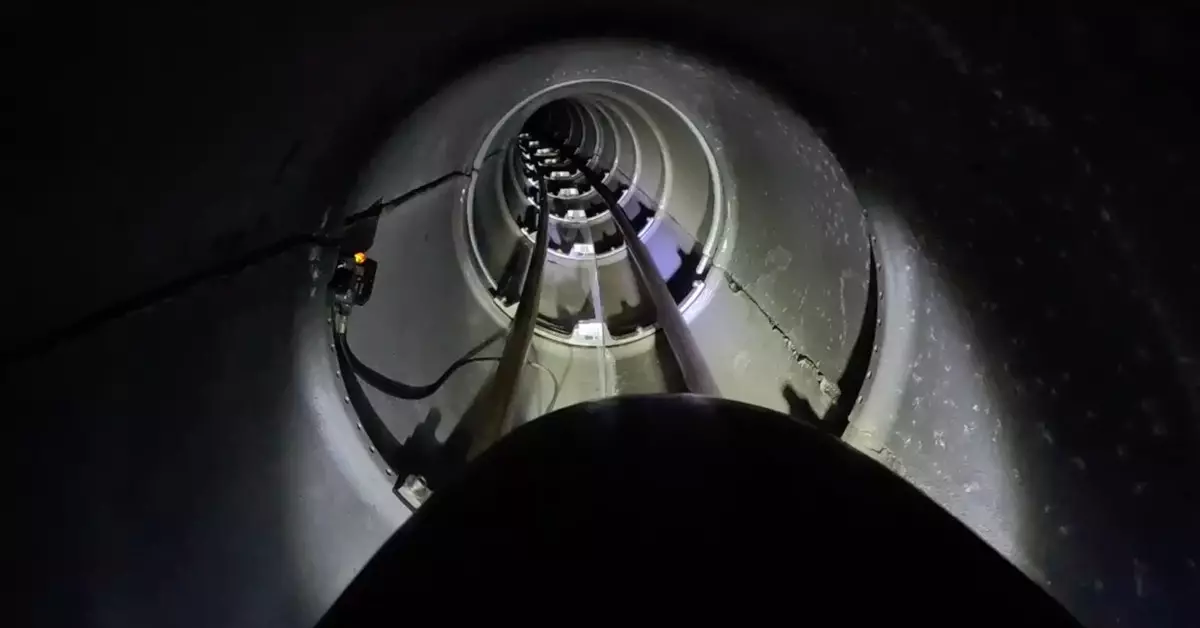In recent debates around innovative transportation, the hyperloop concept, once thought to be dead, has shown a flicker of resurgence. An article by Andrew J. Hawkins initially proclaimed that the hyperloop was just a fanciful dream that met its end. However, new developments suggest that the hyperloop may be looking to rise from the ashes, albeit in a diminished form—a 1/12th-scale model in Switzerland.
Elon Musk first introduced the hyperloop concept in 2013, suggesting a revolutionary mode of transportation involving aerodynamic capsules traveling within low-pressure tubes at speeds approaching 700 mph. The idea promised not just speed but a potential transformation in how people and goods move between cities. Musk envisioned a network that would promote economic growth, reduce commute times, and alleviate urban congestion. This wasn’t just idle speculation; it was billed as a “fifth mode of transportation,” blending aspects of trains, planes, and automobiles into a singular, streamlined alternative.
However, the path to realizing this vision has been fraught with obstacles. Early enthusiasm led to numerous initiatives, yet most hyperloop startups have been plagued by financial difficulties and regulatory challenges, leading skeptics to label hyperloop projects as “vaporware.”
The latest developments are emerging from Switzerland, where a research team is pioneering the LIMITLESS project—an acronym standing for Linear Induction Motor Drive for Traction and Levitation in Sustainable Hyperloop Systems. This project has recently completed its most extensive test yet: a circular track measuring just 120 meters in length, where it achieved a speed of 40.7 km/h (25.3 mph). While this may seem trivial compared to the ambitious speeds Musk proposed, the team asserts that these initial tests serve as critical indicators for future scalability. They claim these smaller tests can be extrapolated to larger distances and faster speeds, envisioning potential journey speeds of 303.4 km/h (188 mph) over distances equating to major city pairs.
In its modest scope, the project represents a significant step for researchers involved, yet it raises pertinent questions about reality versus aspiration. Can these scaled experiments lead to a viable and financially sustainable hyperloop system, or are they merely small-scale demonstrations of a concept that may never materialize on a grand scale?
Despite the promising claims from the Swiss team, critics remain skeptical. The previous failures of other hyperloop endeavors have intensified doubts about the feasibility and market viability of such a transport method. Concerns arise from the extensive infrastructure requirements, potential environmental ramifications, and regulatory hurdles that could stymie development. The hyperloop, once envisioned as an urban savior, now appears more like a utopian project detached from the fiscal realities of modern transportation systems.
Moreover, the original impetus that launched the hyperloop into the public consciousness—Musk’s endorsement—has waned in recent years. His focus has shifted towards other ventures, including those related to Tesla and The Boring Company, which pursue underground transportation solutions rather than tube travel. With such disinterest from its primary proponent, undercurrents of doubt naturally swirl around the hyperloop concept.
As the LIMITLESS project progresses, it will have to answer pivotal questions: Will it lead to tangible advancements, or is it just a glimmer of hope in an otherwise barren landscape of transportation innovation? Advocates will need to navigate a complex web of challenges to transform the fragmented visions into a consecutive reality.
In the relentless quest for transportation alternatives, the hyperloop captures the core tension between imagination and practicality. While scientists and engineers in Switzerland actively push the envelope, the road ahead remains riddled with complications. Whether the hyperloop proves to be a path to a redefined travel experience or remains a relic of futuristic speculation will take time—and likely a good deal of investment—to determine. For now, the world watches, awaiting a more definitive testament to whether this tantalizing promise can sprout wings or if it will once again be grounded.


Leave a Reply